Huawei Honor 6 Review
by Andrei Frumusanu & Joshua Ho on September 12, 2014 9:00 AM EST- Posted in
- Smartphones
- Huawei
- Android
- Mobile
- Honor 6
Display brightness and accuracy
The 5" 1080p display is manufacutred by JDI. The display is a non-IPS display and the viewing angles are visibly suffering from this, however it's not terrible. It offers excellent brightness and is very visible in bright conditions other than direct sunlight reflections.
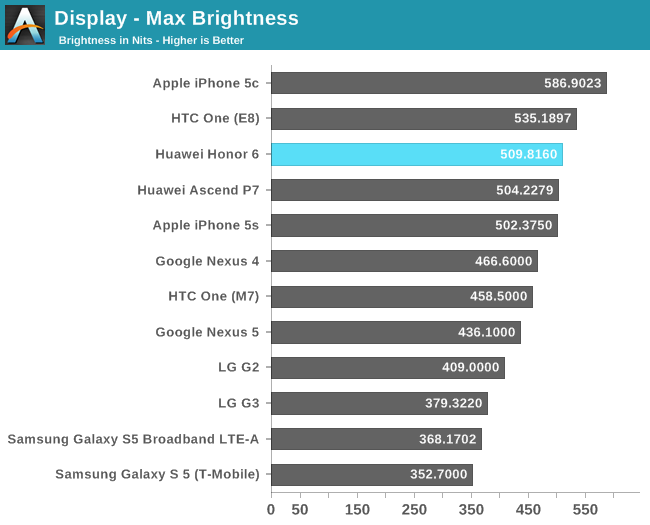
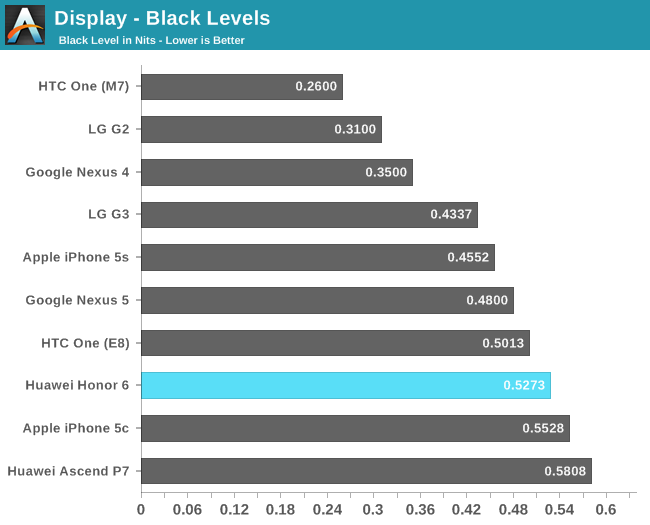
The black levels on the display can be quite disappointing, the light bleed of the display at night-time or on dark content is visible. Here the JDI panel fails to impress and can't compete with competing IPS panels from LG, not to mention AMOLED screens.
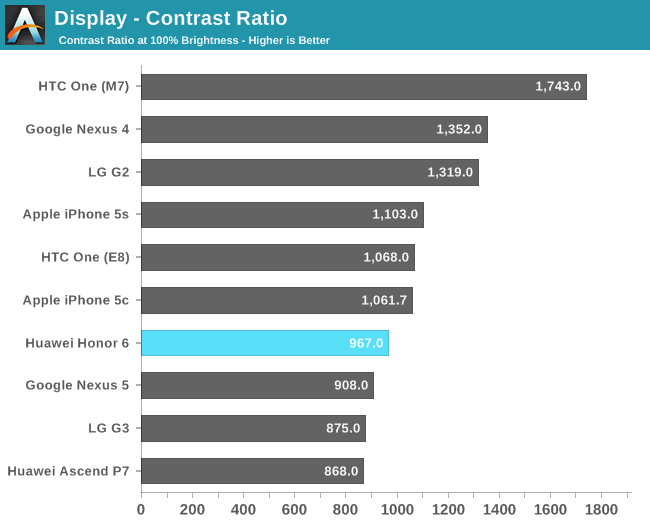
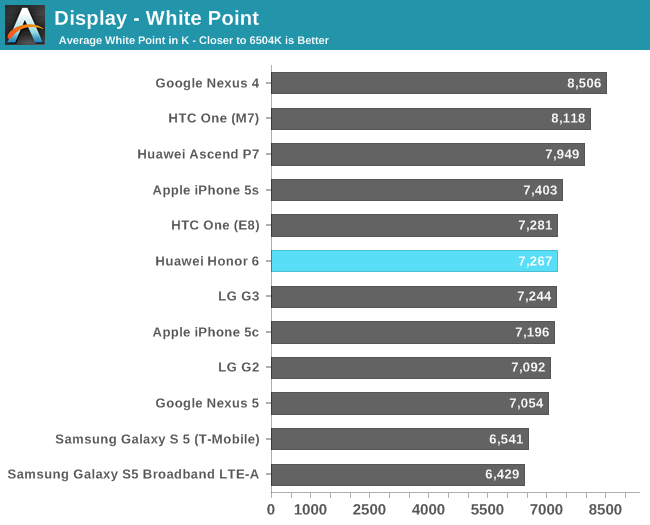
The default colour temperature that the Honor 6 comes configured with falls into the more blue-ish white that we also see from many other LCD manufacturers. The difference is that Huawei offers a colour temperature control in the display settings that allow you to tune this.
Sadly, the slider has no scale and thus it's not possible to determine the white point that you're setting without having calibration equipment, however it's more than enough to customize it to your own preference, and if you have trained eyes, even hit 6500K with it.
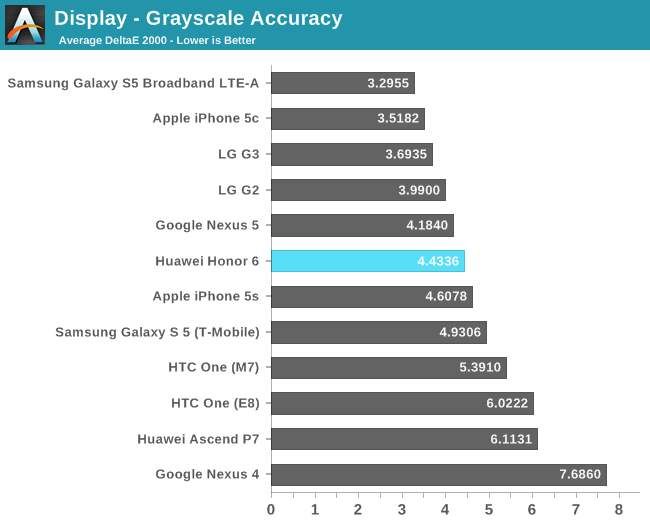
In terms of grayscale accuracy, the Honor 6 falls in the middle ground, neither impressing nor disappointing too much. We see a very low total gamma figure of 1.965, being dragged down by bad calibration in the high brightness levels. The RGB balance is also very off with too much blue while in the display's default colour temperature.
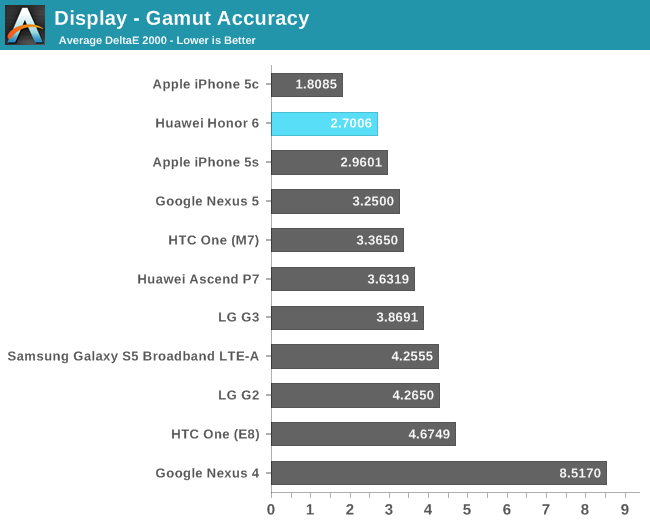

In the sRGB colourspace gamut measurement the Honor 6 seems to perform excellently if you just look at the 100% saturation points. Even the saturation accuracy performance is top-notch, rivalling all but the iPhone 5C's calibration.
If you look at the CIE 1976 saturations chart, you will see that there's some saturation compression going on, mostly notable in the green and red spectrum.
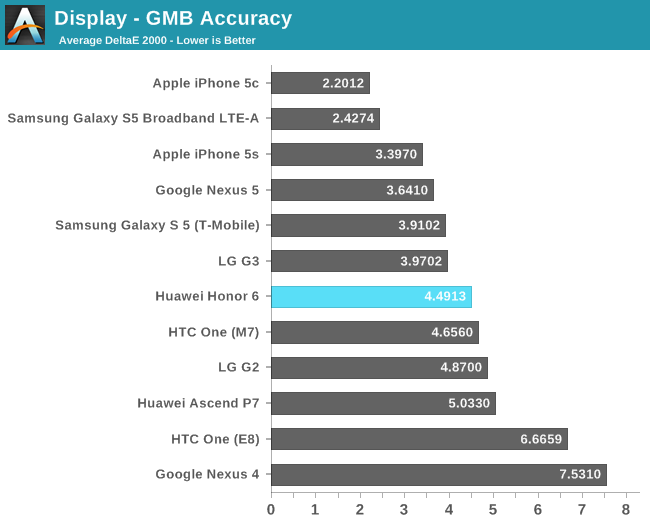
Unfortunately, it's on the GMB accuracy test on which the Honor 6 fails to impress. Due to the default colour temperature's settings, the whole blue spectrum is oversaturated and misses the target colours, greatly bringing down the overall DeltaE for this test.
All in all, the Honor 6 offers a good display. Its weakness lies in the viewing angles which remind me of Sony's original Xperia Z, and the not so good black levels. With the included temperature controls in the OS, you are able to fix the blueish display if you wish so, but Huawei could have definitely included display profiles for this functionality that would have offered true 6500K whites.
720p "Rog" mode
Huawei offers a mysterious "Rog technology" switch in the main settings, without much explanation on what it does or how it works. While playing around with it I found that it's nothing else than a switch to run the phone in 720p. It resets Android's window-manager to 720x1280 and requires a reboot each time you switch it on or off. The DPI of the OS and all graphics are also reduced to maintain the same aspect-ratio of the UI elements. This is the first time I've seen an OEM make use of this and presents itself as an interesting option for people who feel that 1080p is a waste on current smartphones.
I tried to capture the effect with a macro shot of small text, arguably the most noticeable instance where this would be visible. For comparison, the above is a full-screen screenshot of what I was trying to magnify.
720p rendering interpolated to 1080p
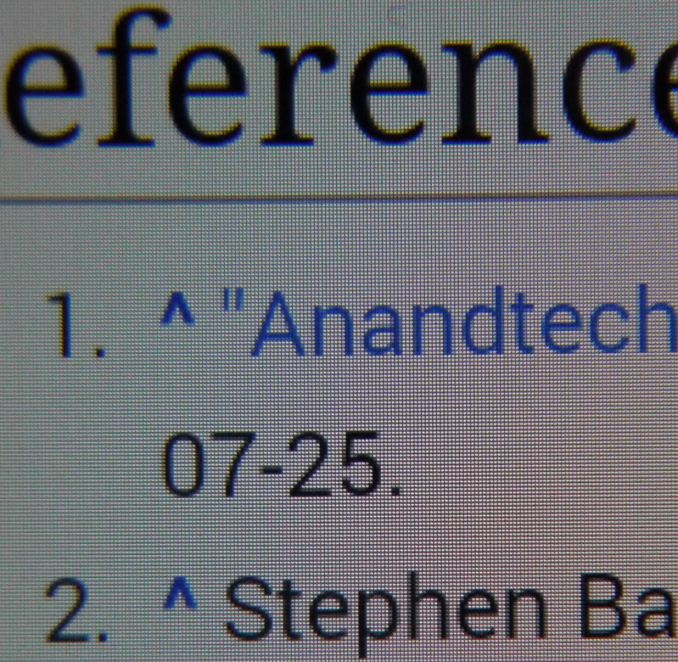
The results are quite intriguing, the 720p offered little added jagginess as the hardware was able to do quite good quality upsampling to the screen's native 1080p. In general what you would notice is more of a blurriness and reduction in sharpness. I could definitely see people with not so perfect eyesight using this mode at all times as it reduces the load on the GPU and improves performance and battery life.
Ideally, it would be interesting to see a 720p mode on 1440p screens as it would offer perfect scaling, with one logical pixel being mapped to exactly four physical ones, without the need for interpolation and upscaling artifacts.


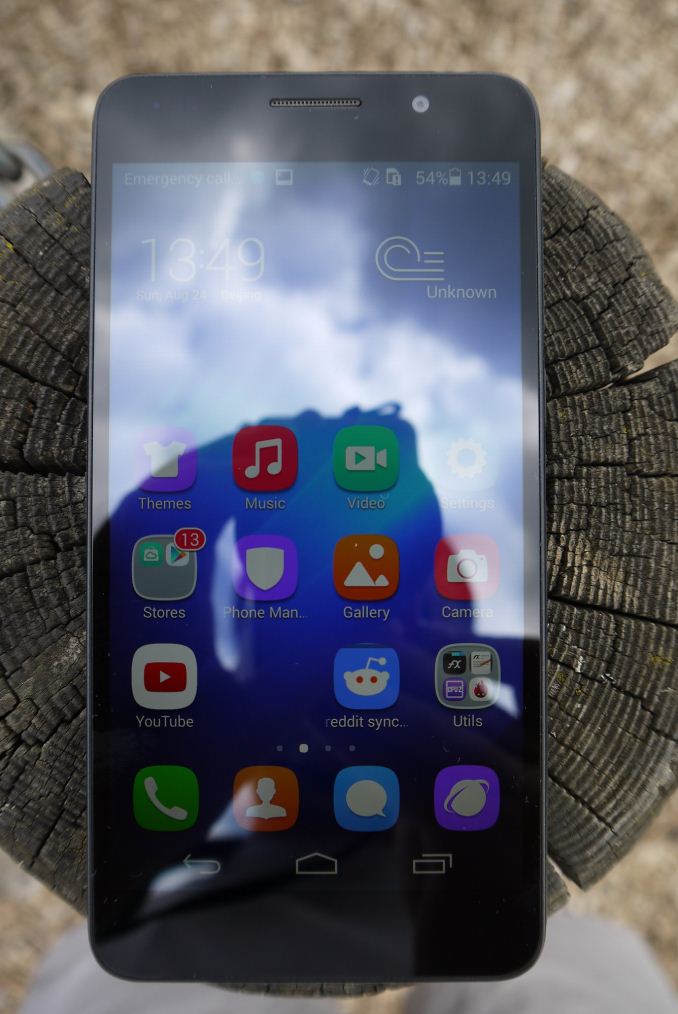
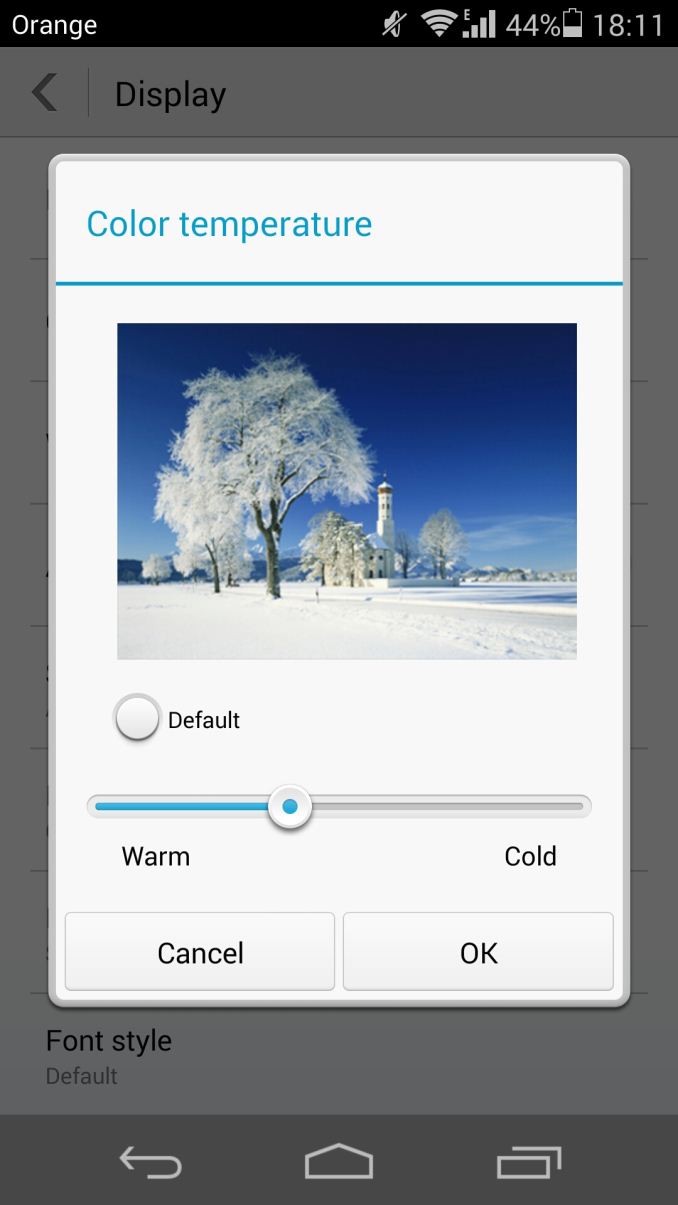
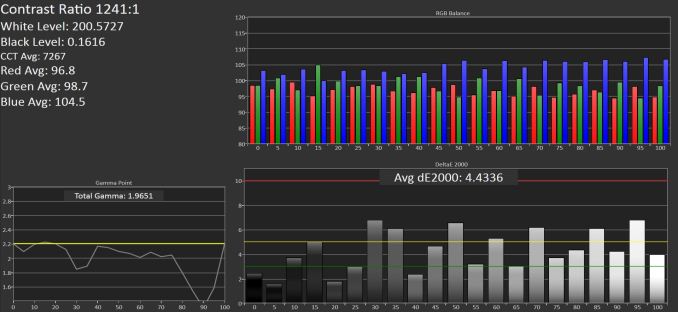
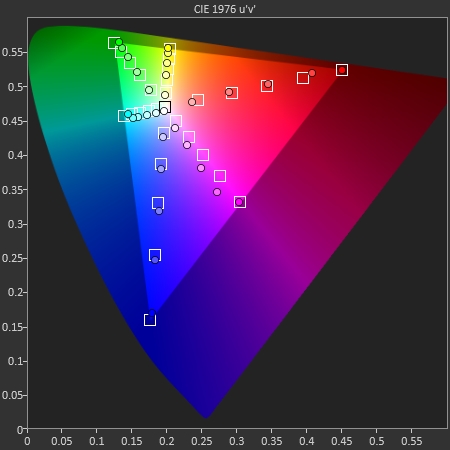
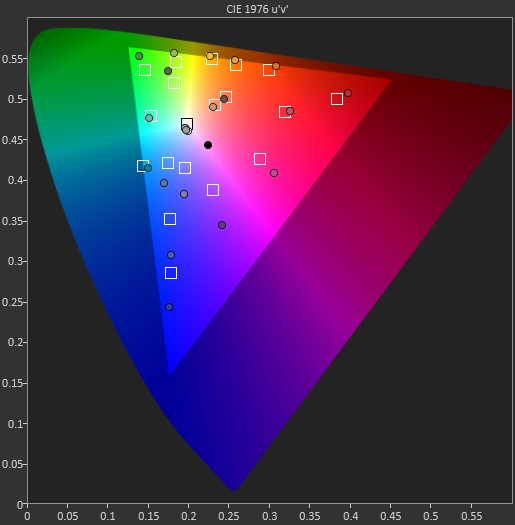
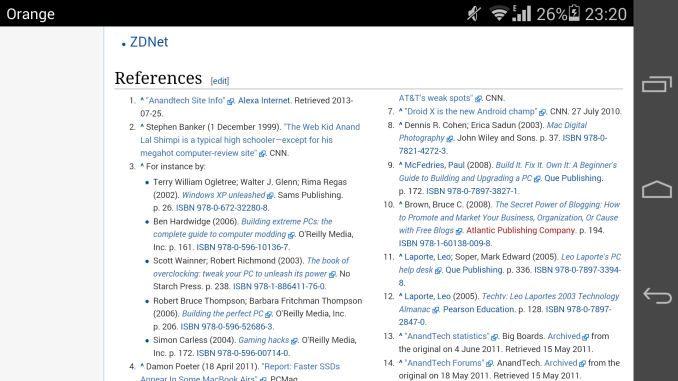
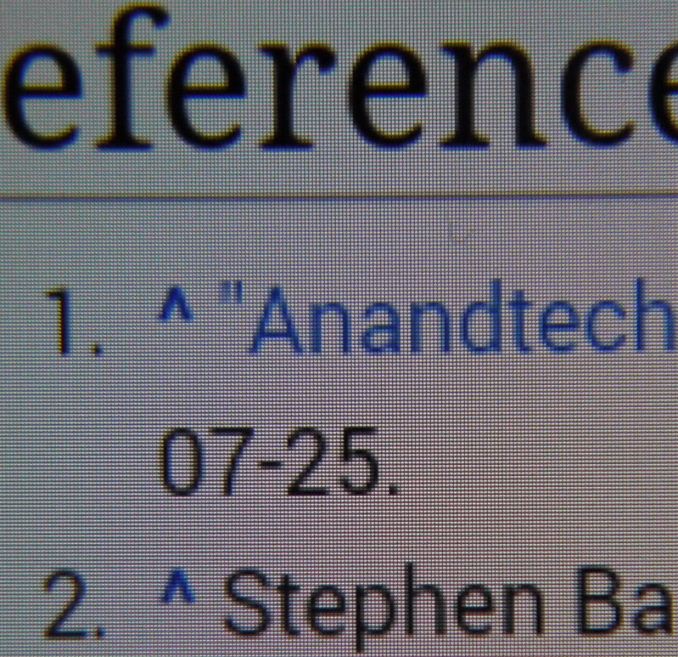








59 Comments
View All Comments
Achtung_BG - Friday, September 12, 2014 - link
Kirin920/925 is very intrasting SoC compared with MediaTek 6595( 4 cortex A17, 4 cortex A17 GPU PowerVR6200) in mid phone class 200-300$johnny_boy - Friday, September 12, 2014 - link
As someone who doesn't game, this SoC is pretty interesting. Being interested in mainly web performance, this phone looks fairly attractive for the price. This obsession with phone/tablet GPU performance is a bit puzzling, and there should be options with strong CPU performance and middling GPU performance for those of us who only do casual or once-in-a-blue-moon phone/tablet gaming. What percentage of tablet users are utilizing the full power of their Tegra K1 GPU, or phone users utilizing the full power or their Snapdragon 801 (Adreno 330) GPU? My bet is few.johnny_boy - Friday, September 12, 2014 - link
Whoops, I forgot there's only one K1 tablet out right now, and it's a gaming one! So probably 100% of K1 users ARE utilizing that fullness of that GPU!hendry07 - Saturday, September 13, 2014 - link
if im not mistaken, there are 2 K1 Tablets that are out right now. MiPad , and Shield.soccerballtux - Friday, September 12, 2014 - link
how do you burn through 3100mAh in 1.6483 hours that is beyond metuxRoller - Friday, September 12, 2014 - link
By having it use about 6W/hr;)masimilianzo - Friday, September 12, 2014 - link
Great having reviews for chinese only phones! They are great! Nubias, Meizu, Xiaomi, Huawei. Please keep going reviewing this stuffNeatOman - Saturday, September 13, 2014 - link
I just want to note something that is not brought up nearly as much or at all, the lighting that affects the screens... over many years I've seen screen look better then other in certain light and in other light other screens come out ahead. Long story short, my Nexus 5 looks much better in the sun then my friends iPhone 5c.. the colors seam to be almost *enhanced* if you will while the iPhone although very clear in the sun still looked washed out. Also if you have polorized glassed on the iPhone screen gets wired (kind cool lol) and the Nexus 5 is perfectly visible both vertically and horizontally (the Nexus 4's screen would go totally black if it was held sideways with polarized glasses on).So despite not being as bright outright, it handles sunlight hitting the screen much much better then a iPhone 5//5s/5c, especially with glasses on.
johnny_boy - Saturday, September 13, 2014 - link
Nice looking phone. Too bad about the crappy wifi and flash performance, because that should be a dealbreaker for almost anyone.p51d007 - Saturday, September 13, 2014 - link
I have a Huawei Ascend Mate2, and it has a non removable battery. Considering it is a 4000mAH battery, it doesn't matter. Even with a 6.1" screen, it lasts 2-3 days on average. Some have questioned when they released it with a Snapdragon 400 SOC along with a 720p screen. I even had doubts until I started seeing reviews & actual users that have it. Some also questioned the lack of kit kat, sticking it with JB 4.3, but, I bet the majority of users won't care. It's fast, the screen is crystal clear, unless you are a pixel peeper that holds the device 2 inches from your nose! If more and more "mid spec" devices start showing promise, perhaps the days of over priced super spec devices will start to dissipate. Do you "really" need an 8 core 1080p screen? The apps can't really take advantage of all that speed anyway.